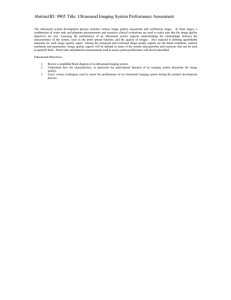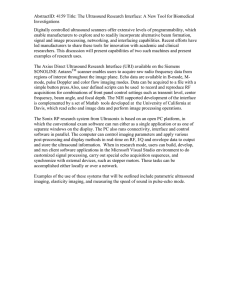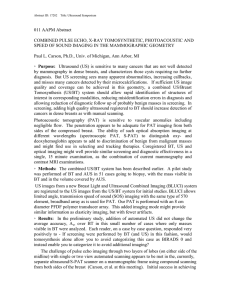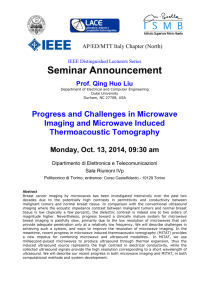Multimodality Breast Imaging Systems: Tomo/Ultrasound/Optics, Ultrasound/Other
advertisement
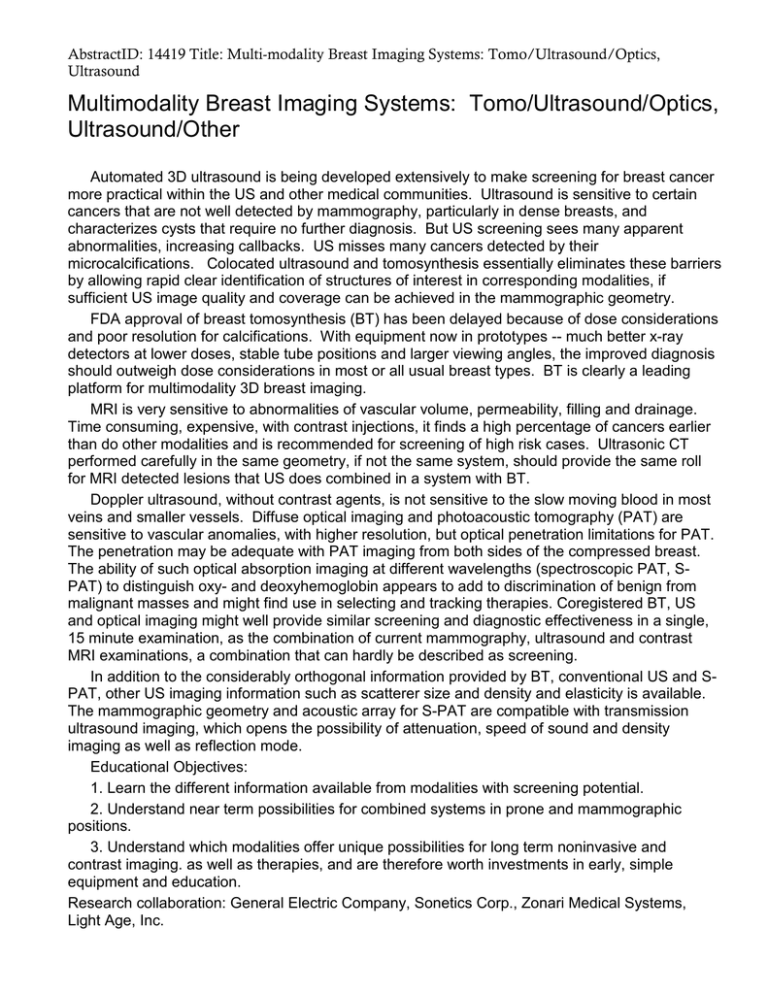
AbstractID: 14419 Title: Multi-modality Breast Imaging Systems: Tomo/Ultrasound/Optics, Ultrasound Multimodality Breast Imaging Systems: Tomo/Ultrasound/Optics, Ultrasound/Other Automated 3D ultrasound is being developed extensively to make screening for breast cancer more practical within the US and other medical communities. Ultrasound is sensitive to certain cancers that are not well detected by mammography, particularly in dense breasts, and characterizes cysts that require no further diagnosis. But US screening sees many apparent abnormalities, increasing callbacks. US misses many cancers detected by their microcalcifications. Colocated ultrasound and tomosynthesis essentially eliminates these barriers by allowing rapid clear identification of structures of interest in corresponding modalities, if sufficient US image quality and coverage can be achieved in the mammographic geometry. FDA approval of breast tomosynthesis (BT) has been delayed because of dose considerations and poor resolution for calcifications. With equipment now in prototypes -- much better x-ray detectors at lower doses, stable tube positions and larger viewing angles, the improved diagnosis should outweigh dose considerations in most or all usual breast types. BT is clearly a leading platform for multimodality 3D breast imaging. MRI is very sensitive to abnormalities of vascular volume, permeability, filling and drainage. Time consuming, expensive, with contrast injections, it finds a high percentage of cancers earlier than do other modalities and is recommended for screening of high risk cases. Ultrasonic CT performed carefully in the same geometry, if not the same system, should provide the same roll for MRI detected lesions that US does combined in a system with BT. Doppler ultrasound, without contrast agents, is not sensitive to the slow moving blood in most veins and smaller vessels. Diffuse optical imaging and photoacoustic tomography (PAT) are sensitive to vascular anomalies, with higher resolution, but optical penetration limitations for PAT. The penetration may be adequate with PAT imaging from both sides of the compressed breast. The ability of such optical absorption imaging at different wavelengths (spectroscopic PAT, SPAT) to distinguish oxy- and deoxyhemoglobin appears to add to discrimination of benign from malignant masses and might find use in selecting and tracking therapies. Coregistered BT, US and optical imaging might well provide similar screening and diagnostic effectiveness in a single, 15 minute examination, as the combination of current mammography, ultrasound and contrast MRI examinations, a combination that can hardly be described as screening. In addition to the considerably orthogonal information provided by BT, conventional US and SPAT, other US imaging information such as scatterer size and density and elasticity is available. The mammographic geometry and acoustic array for S-PAT are compatible with transmission ultrasound imaging, which opens the possibility of attenuation, speed of sound and density imaging as well as reflection mode. Educational Objectives: 1. Learn the different information available from modalities with screening potential. 2. Understand near term possibilities for combined systems in prone and mammographic positions. 3. Understand which modalities offer unique possibilities for long term noninvasive and contrast imaging. as well as therapies, and are therefore worth investments in early, simple equipment and education. Research collaboration: General Electric Company, Sonetics Corp., Zonari Medical Systems, Light Age, Inc. AbstractID: 14419 Title: Multi-modality Breast Imaging Systems: Tomo/Ultrasound/Optics, Ultrasound Supported by NIH Grants R01CA91713 and R01CA115267.
